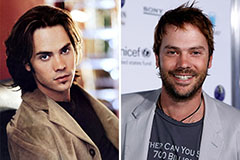The annals of specialist wrestling are brimming with iconic symbols, substantial representations of glory, and testimonies to the devotion and prowess of its champions. Amongst these treasured artefacts, couple of reverberate with the exact same degree of magnificence and acknowledgment as the WWF Big Eagle Belt. This championship title, with its distinct style and the family tree of legendary figures that held it up, inhabits a significant phase in the background of the World Wrestling Federation (WWF), currently referred to as copyright. To absolutely appreciate its relevance, we need to delve into its origins, evolution, the titans that used it, and the withstanding legacy it continues to keep in the hearts of battling lovers worldwide.
The WWF Big Eagle Belt wasn't simply a reward; it was a statement. Presented in 1988, it noted a departure from the previous, smaller championship styles, introducing an period of more visually enforcing and prestigious hardware. The name itself, commonly reduced to merely the "Big Eagle," aptly described its striking look. Identified by a big, elaborately thorough eagle emblem at its facility, wings outstretched in a sign of dominance, the belt emanated an aura of power and relevance. Flanking the central plate were smaller side plates, frequently including the WWF logo design and adjustable rooms for the champ's name. The abundant, dark natural leather band additionally emphasized the gold-plated majesty of the central design, making it quickly recognizable and coveted.
The intro of the WWF Big Eagle Belt accompanied a duration of significant development and mainstream popularity for the WWF. Under the leadership of Vince McMahon, the company was transforming right into a international home entertainment phenomenon, sustained by epic personalities and compelling storylines. The new championship style served as a visual keystone of this period, held by the leading celebrities who headlined sold-out fields and mesmerized millions seeing in the house.
The family tree of champs who held the WWF Big Eagle Belt checks out like a who's who of wrestling royalty. The inaugural champ was none aside from "Macho Man" Randy Savage, a flamboyant and tremendously talented entertainer whose regime set the stage for the title's prestigious future. Complying with Savage, a sequence of iconic figures etched their names into the belt's tradition. Hulk Hogan, the utmost icon of 1980s fumbling boom, held the title numerous times, further solidifying its significance as the peak of WWF success. His epic character and the legendary photo of him lifting the WWF Big Eagle Belt high over his head are indelibly linked in the minds of followers.
The 1990s saw the WWF Big Eagle Belt continue its reign as the leading reward, decorating the midsections of a brand-new generation of wrestling icons. The Ultimate Warrior, with his extreme power and link with the audience, added his one-of-a-kind phase to the title's background. Bret "The Hitman" Hart, a technological fumbling master, brought a various kind of prestige to the champion, showcasing the in-ring quality it represented. Shawn Michaels, the " Broken heart Youngster," with his charisma and athleticism, more raised the title's relevance throughout his unforgettable powers.
Each champion brought their own distinctive design and character to their tenure with the WWF Big Eagle Belt, adding to its developing narrative. Title modifications often worked as pivotal moments in WWF stories, fueling rivalries and fascinating audiences with dramatic conflicts. The visual phenomenon of the champion being protected in centerpiece suits on pay televisions additionally cemented its wwf big eagle belt condition as the supreme reward in specialist fumbling.
Beyond the individual champs, the WWF Big Eagle Belt itself came to be an integral part of battling iconography. Its look on advertising products, product, and computer game covers strengthened its location in popular culture. The sight of the belt draped over a champ's shoulder came to be a universally recognized sign of success in the wrestling world.
As the WWF transitioned right into the Attitude Age in the late 1990s, the WWF Big Eagle Belt went through a subtle redesign, frequently described as the "Winged Eagle" belt by enthusiasts because of the much more noticable wing design of the main eagle. This upgraded variation remained to stand for the WWF Champion during a period of unprecedented appeal for the company, held by iconic numbers like Stone Cold Steve Austin and The Rock.
Ultimately, the WWF Big Eagle Belt style was retired in the late 1990s, making way for a brand-new, a lot more contemporary champion design. Nonetheless, its impact on the history of professional fumbling continues to be indisputable. The WWF Big Eagle Belt is fondly kept in mind by followers as a symbol of a golden age in fumbling, a time when larger-than-life heroes fought for the best prize, stood for by this magnificent piece of equipment.
The heritage of the WWF Big Eagle Belt prolongs beyond its physical presence. It represents an period of narration, personality advancement, and in-ring action that captivated a international audience. It serves as a suggestion of the epic numbers that led the way for the fumbling landscape we understand today. Collection agencies and fans alike hold reproductions of the WWF Big Eagle Belt in prestige, a concrete link to a treasured past.
Finally, the WWF Big Eagle Belt was greater than just a championship title; it was a symbol of quality, a representation of the desires and desires of expert wrestlers, and a visual keystone of a transformative period in battling background. From its striking style to the famous champions who proudly carried it, the WWF Big Eagle Belt stays an enduring symbol, forever etched in the cumulative memory of battling followers as a testimony to the grandeur and enduring appeal of the sport. Its story is an indispensable part of the rich tapestry of wrestling lore, a phase that remains to be commemorated and born in mind with a feeling of nostalgia and regard.
 Patrick Renna Then & Now!
Patrick Renna Then & Now! Barry Watson Then & Now!
Barry Watson Then & Now! Susan Dey Then & Now!
Susan Dey Then & Now! Kane Then & Now!
Kane Then & Now! Sarah Michelle Gellar Then & Now!
Sarah Michelle Gellar Then & Now!